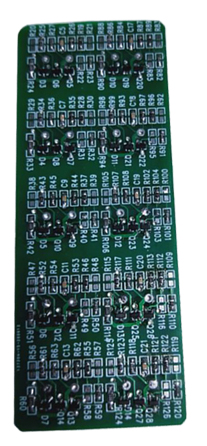Consulting phone:
135-3037-2041
(Mr.Wang)
Yukun super capacitor
Product information (can be made to order)

name | 12 strings 24V-32V Super capacitor module |
size | 15.5mm*5mm (manual measurement error) |
high | 5mm (manual measurement error) |
Voltage | Equilibrium voltage 2.67%+0.25% |
Features
Rated voltage (V):24V
Limit working voltage (V): 32
Rated capacity (F): 1.6
Capacity tolerance: 0%~10%
Single capacitor capacity (F): 15
Number of single copies (support): 12
Operating temperature range ( ℃ ): -40~65
Storage temperature range ( ℃ ): -40~65
Weight (KG): 0.12
Monomer balancing method: active balancing
Cycle life (times): ≥ 500000
Product testing method:
The standard test conditions are: standard atmospheric pressure, temperature 25±2℃, relative humidity less than 65%.
Capacity/Internal Resistance Test
Capacity test: under the condition of 25±5℃, charge the product at 1C to the set voltage of 4.2V, then charge the product with constant voltage to 0.1C, and then discharge the product to 2.5V at 1C current. After standing for 30s, repeat the above process again, and take the capacity value (mAh) after the second discharge as the capacity value of the product.
Internal resistance test: charge the product to 4.2V with a 3C current, and then charge the product to a 0.1C cut-off current, then read its AC internal resistance (ACR) on a 1kHz AC impedance meter. When measuring the capacity of the product, it is necessary to record the voltage difference of the sample from the start of discharge to the discharge within 10ms during the discharge process, and calculate the DC internal resistance (DCR) of the product by R=ΔU/I. Note: During the "capacity and internal resistance" test, the recording time of the data collection point is set to 1s.
Low temperature performance test
Under the set temperature condition, charge the cell to 4.2V, then charge it with constant voltage to 0.1C, then put it under different temperature conditions, discharge the cell to 2.5V with a current of 1C, and record the capacity of the cell during the discharge process.
cycle life
Under the condition of 25±5℃, after the initial performance is measured according to the "capacity/internal resistance test" method, the product is charged to 4.0V with a current of 5C, discharged to 2.5V with a constant current of 2C and left for 5min, and the cycle test After 2000 weeks. The above test process is a cycle, and the test process needs to repeat the above cycle 15 times, and finally achieve 30,000 life tests.
Precautions:
1. Use
1. Lithium Ion Capacitors The operating temperature should not exceed the upper or lower limit of the rated temperature (-20 degrees ~ +55 degrees)
2. Lithium ion capacitor Should be used at nominal voltage. At the same time, in order to prolong the service life of the product, it is recommended that the monomer be used within the range of "rated voltage" (2.5v-3.8v).
3. Please confirm the polarity of lithium-ion capacitors before use, and avoid reverse connection.
4. The external ambient temperature has a heavy impact on the life of lithium-ion capacitors, please keep away from heat sources.
5. Do not directly touch water, oil, acid or alkali for lithium ion capacitors.
6. Do not knead, nail, or disassemble Li-ion capacitors.
7. Do not discard lithium-ion capacitors at will. When discarding, please dispose of them in accordance with national environmental protection standards.
2. Storage
1. During the transportation of lithium-ion capacitors, avoid violent vibration, kneading, rain and chemical corrosion, and handle with care.
2. Lithium-ion capacitors should not be placed in places with a relative humidity of more than 85% or containing toxic gases. In such an environment, the leads and casings are susceptible to moisture and corrosion, resulting in an open circuit of the ultra-fast rechargeable battery.
3. If the lithium-ion capacitor needs to be stored for a long time, please store it in a place with a temperature of -40~35 degrees, a relative humidity below 50%, and good ventilation.